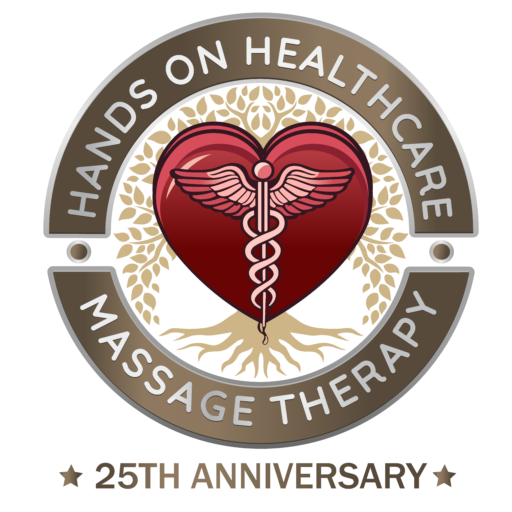Tips for Success with Myofascial Release (MFR)
As you begin your Myofascial Release (MFR) treatment, you’ll quickly notice that it is quite unlike any other form of bodywork you may have experienced. To help you make the most of your MFR journey, we’ve compiled a few key tips for success.
Your Body Can Heal!
It’s important to recognize that your body has an incredible capacity to heal. Whatever challenges brought you here, you have persevered, and your body has shown its resilience.
At the heart of Myofascial Release (MFR) is the goal of opening up your body through the fascial system, creating the space and opportunity for your body to do what it is designed to do—heal itself.
Even if you’re currently experiencing pain or discomfort, know that your body is capable of change, and with time and treatment, it will change. This journey is one of unlocking your body’s natural ability to recover and thrive.


Your Body Feels Emotions
Your body feels, and your brain thinks. Emotions—often referred to as “feelings”—play a significant role in releasing pain and dysfunction within the body. These emotions are expressed and processed through the body, while the mind experiences and labels them.
As you engage in Myofascial Release (MFR), it’s encouraged to stay present in your body and pay attention to what you are feeling and experiencing. This awareness can help you identify and release long-held emotions or movement patterns that may have contributed to your pain.
By connecting with and understanding your emotions, you take an important step toward healing and restoring balance in your body and mind.
Have a Goal
Having a clear and realistic goal for your treatment is an essential part of achieving success. While aiming to be completely “pain-free” may sound ideal, it’s not always a realistic expectation. Instead, consider setting specific and actionable goals that you can work toward with your therapist.
For example:
- “I want to reduce low back pain while working and increase my ability to run longer distances.”
Sharing your goals with your therapist allows you to collaborate effectively, tailoring the treatment to your needs. The more committed you are to your goals, the greater your chance of success.
Start your journey with a clear vision, and let us help you work toward it!


Healing Crisis: A Natural Part of the Process
As you progress through your treatments, you may encounter what is known as a healing crisis. This can manifest in several ways, including:
- Mild to intense workout-like pain
- A feeling of emotional chaos
- Physical discomfort
While these sensations can be uncomfortable, they are a normal part of the healing process. Your body may have been holding onto patterns of restriction for an extended period, and releasing these restrictions can trigger this “crisis” phase.
What’s Happening?
When a fascial restriction is released, it often reconnects you with areas of your body that may have been out of touch. The discomfort or emotional upheaval you experience is more akin to a “waking up” process—a natural response as your body adjusts to newfound freedom of movement and function.
How to Handle It
- Be Gentle with Yourself: Treat your body and mind with care during this time.
- Allow Yourself to Feel: Embracing these sensations is an important step in the healing journey.
- Communicate with Your Therapist: Share what you’re experiencing so adjustments can be made to support you through the process.
Remember, this is a temporary phase that often leads to deeper healing and long-term relief. Trust the process and know that your body is on the path to restoration.
Communication: Key to a Successful Session
Open communication with your therapist is an essential part of your healing process. Sharing what you are experiencing—both during and after a session—helps your therapist better understand your needs and tailor the treatment accordingly.
What to Expect
Your therapist may occasionally ask if you notice anything specific during or after a session. Remember, there is no wrong answer—everything you feel (or don’t feel) is valid.
- If you feel sensations, emotions, or changes, let your therapist know.
- If you feel “nothing”, that’s okay too! Feeling “nothing” doesn’t mean the session wasn’t beneficial. Often, the effects of the treatment are subtle and may take time to fully manifest.
Your Experience Matters
Your feedback is valuable, no matter how small or insignificant it may seem. By staying open and honest, you can help your therapist provide the best possible care and maximize the benefits of your sessions.
Together, communication and collaboration pave the way for a successful healing journey!


Movement: A Natural Part of the Healing Process
During treatment, you may notice that your body feels compelled to move, twitch, or shake. This is completely natural, and we encourage you to allow these movements to happen.
Fascia is a three-dimensional network that supports and moves with your body. Restrictions within this system often follow non-linear patterns that require movement to fully release.
The Role of Movement in Healing
If your injury resulted from trauma, it likely occurred while your body was in motion. To release the trauma pattern stored in your fascial system, unwinding is often necessary.
Unwinding is an enlightened and spontaneous movement that occurs when:
- You feel safe.
- You can let go of control.
- Your subconscious mind releases the trauma trapped within the fascial system.
How Unwinding Helps
Unwinding allows your body to naturally work through the patterns of restriction and trauma, facilitating deep and lasting healing. Your therapist is trained to guide and support you through this process, ensuring you feel safe and secure while allowing your body to do what it needs to heal.
By embracing this natural movement, you take an essential step toward freeing your body from past trauma and unlocking its ability to heal itself. Trust the process and allow your body the space it needs to recover.


